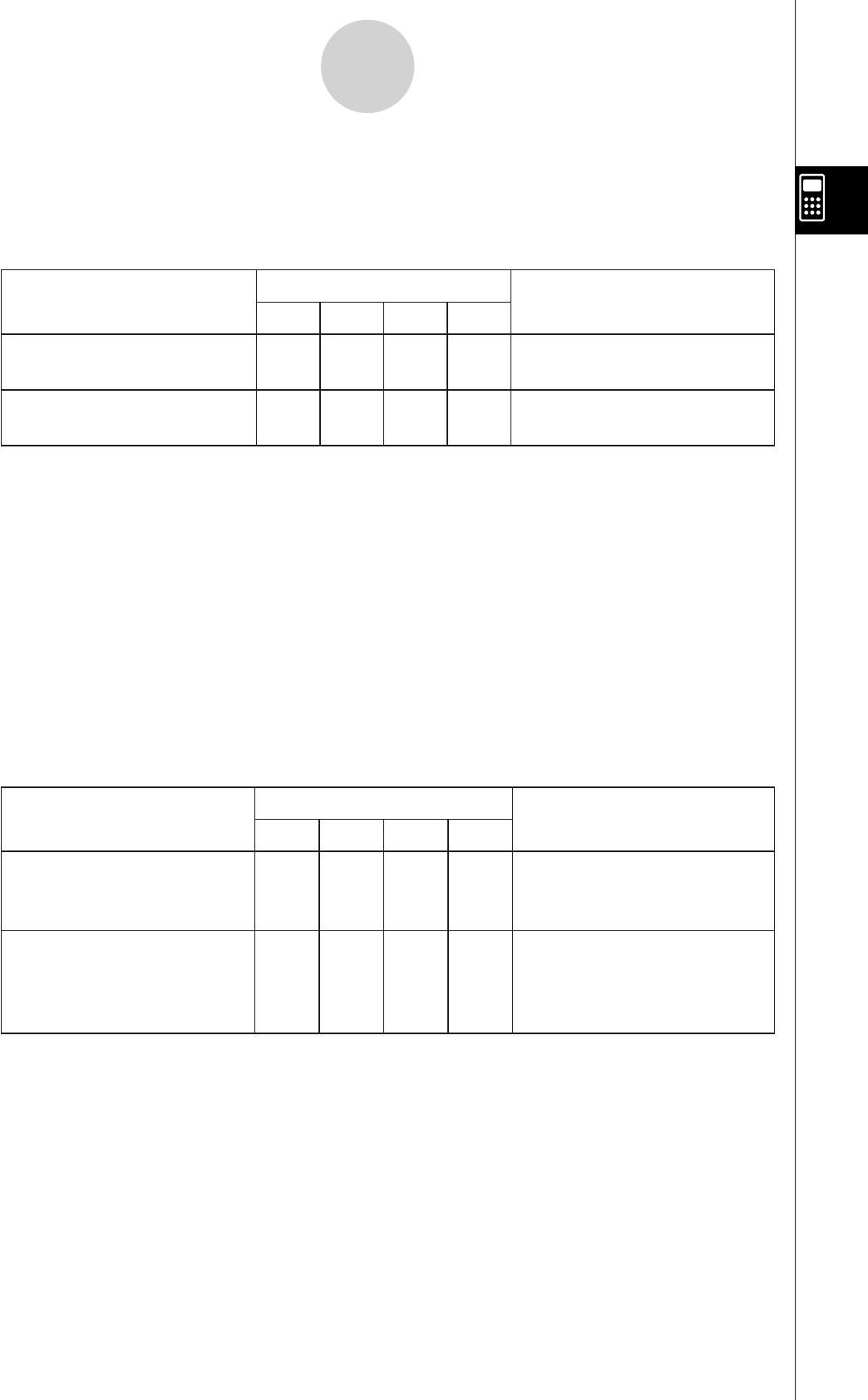
20090601
S
“rand” Function
• The “rand” function generates random numbers. If you do not specify an argument, “rand”
generates 10-digit decimal values 0 or greater and less than 1.
Specifying two integer values for the argument generates random numbers between them.
Problem
Use this keyboard:
Operation
mth abc cat 2D
Generate random numbers
between 0 and 1.
Func [rand]
U
Generate random integers
between 1 and 6.
Func [rand] 1
6
U
S
“randList” Function
Syntax: randList(
n
[, a, b])
Function:
• Omitting arguments “a” and “b” returns a list of
n
elements that contain decimal random
values.
• Specifying arguments “a” and “b” returns a list of
n
elements that contain integer random
values in the range of “a” through “b”.
Description:
• “
n
” must be a positive integer.
• The random numbers of each element are generated in accordance with “RandSeed”
specifications, as with the “rand” function.
Problem
Use this keyboard:
Operation
mth abc cat 2D
Generate a list of three
elements that contain
decimal random values.
Func [randList] 3
U
Generate a list of five
elements that contain
random values in the range
of 1 through 6.
Func [randList] 5
1
6
U
S
“randNorm” Function
The “randNorm” function generates a 10-digit normal random number based on a specified
mean
σ
and standard deviation
μ
values.
Syntax: randNorm(
σ
,
μ
[,
n
])
Function:
• Omitting a value for “
n
” (or specifying 1 for “
n
”) returns the generated random number as-is.
• Specifying a value for “
n
” returns the specified number of random values in list format.
2-4-7
Function Calculations


















